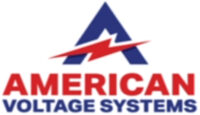Installing an electric car charger requires more than just plugging into an old dryer or heavy appliance outlet. Electric cars have specific power requirements that standard outlets often can’t handle. Here’s why you should trust American Voltage for this critical installation.
Key Steps in EV Charger Installation
- Power Assessment: Evaluate your home’s electrical capacity and determine if upgrades are needed.
- Dedicated Circuit: Install a dedicated circuit for the EV charger to handle its high power demands.
- Proper Wiring: Use appropriate gauge wiring and secure all connections to prevent overheating or electrical failures.
- Testing: Thoroughly test the system to ensure it operates safely and efficiently.
Common DIY Mistakes
- Using Old Outlets: Older outlets, like those for dryers, may not handle the continuous high load required by EV chargers, leading to potential hazards.
- Inadequate Wiring: Improper gauge wiring can overheat and cause fires.
- Lack of Dedicated Circuit: Sharing a circuit with other appliances can trip breakers and disrupt charging.
Why Hire American Voltage?
- Expertise: Licensed electricians assess whether your current electrical system can support an EV charger and determine necessary upgrades.
- Safety: Proper installation prevents electrical hazards and ensures safe operation.
- Compliance: Professionals ensure installations meet local codes and standards.
Installing an electric car charger is a complex task that requires professional expertise to ensure safety and compliance. American Voltage provides reliable installation services, ensuring your system meets the demands of your electric vehicle. For more detailed information and professional advice, visit the American Voltage Systems blog.
